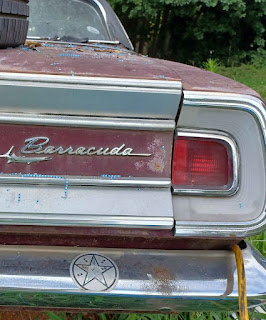Sun Tzu in his book “Art of War” taught armies to burn their boats and destroy the bridges behind them as they advanced into new territory. He argued that soldiers without the option of taking flight are more likely to prevail over their objective.
To that end, our younger son moved to New York City a couple of weeks ago and although he's more than welcome to come home any time he wants, in an indirect way to make things somewhat more challenging for him to do so, I sold the 2003 Chevrolet Malibu his mother and I bought for him three years ago.
I know. Sounds Machiavellian if not draconian. But the damn kid has to learn.
I'm kidding, of course. And forget burning the boats, if I could have burned this car I would have.
I've owned a lot of junkie beaters over the years. From my 1974 Mercury Comet to my 1982 Buick Riviera, the 1996 Chevrolet Camaro's I bought for sons to my 1977 Corvette, even my "beloved" 1975 Chrysler Cordoba, having cars that constantly break down seemingly goes hand-in-hand with my existence. And this Chevrolet Malibu fit right into my garage of broken dreams.
Granted, it was sixteen years old when I bought it, but it had only 97,000 miles on its digital ticker and was an all but rust-free "P-A" car; as us denizens of Ohio refer to our friends just east of the border. I even had a mechanic look it over before I bought it, and he said it was in really good shape. He didn't charge me for the looksee, so I guess I got what I paid for.
I felt proud of myself for buying something intrinsically practical for my non-car appreciating son as well. Nothing sporty like an old Camaro or Mustang. A fairly fuel efficient, four-door sedan with a fold-down rear seat was just what my son ordered. And he was delighted with it. Well, at first.
From the fuel pump failing to AC that stopped blowing cold, a burned-out fuse box to a clogged catalytic converter to a leaking heater core pipe, power windows that stopped working to failed front calipers, not to mention wear items like brakes and tires, I should have called this car, "The Drum". Because it beat me like one.
Then there were my son's constant fender benders. The worst was when he came out of Walmart down at Ohio University and found the right front fender bashed in. "Those damn townies" was his retort.
I hammered it out enough so that the door would open properly but I left it that way up until recently when he started applying for jobs in NYC; a twenty-three-year-old living in NYC doesn't need a car. I thought about getting rid of my 2002 Chevrolet Monte Carlo SS and using the lower-mileage Malibu instead, so I swapped the fender with one I found at Pull-A-Part.
Then I thought twice about it since the Monte Carlo, as old as it is, is simply, in my opinion, a more comfortable and better all-around automobile. Bonus. no self-respecting Facebook Marketplace buyer would pay what I got for this thing with a crushed fender.
Of course, no sooner did I go to put this on Marketplace than the ABS light came on. A harrowing weekend swapping the wheel bearings in the muggiest of northeast Ohio weekends resulted in my listing the car and getting almost what I wanted for it. It sold in just one day.
Burn The Boats.


































.jpg)
.jpg)
.jpg)
.jpg)
.jpg)
.jpg)
.jpg)





